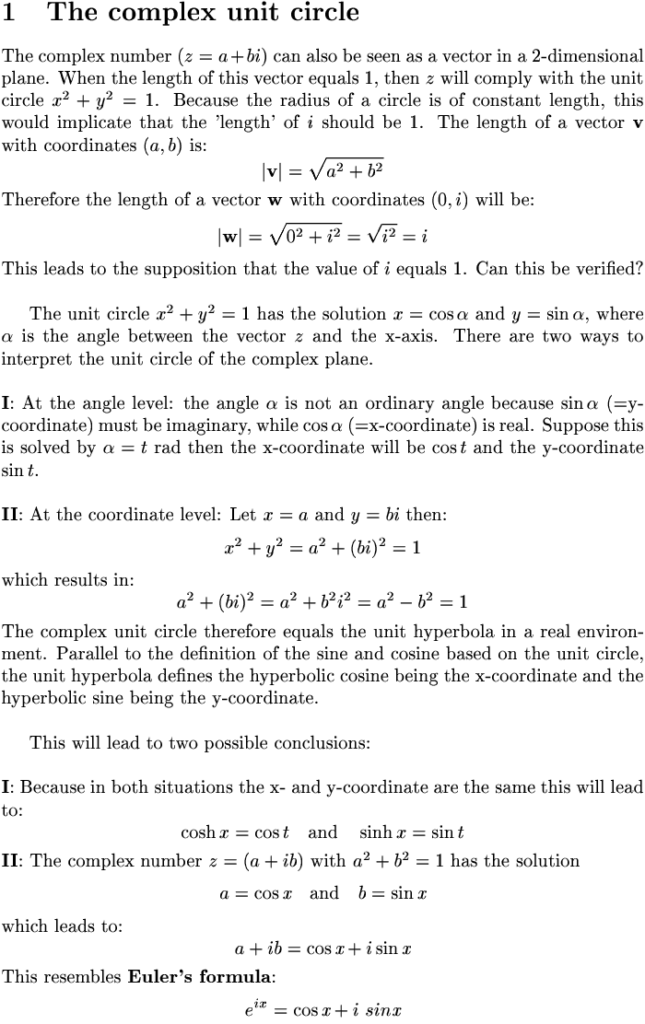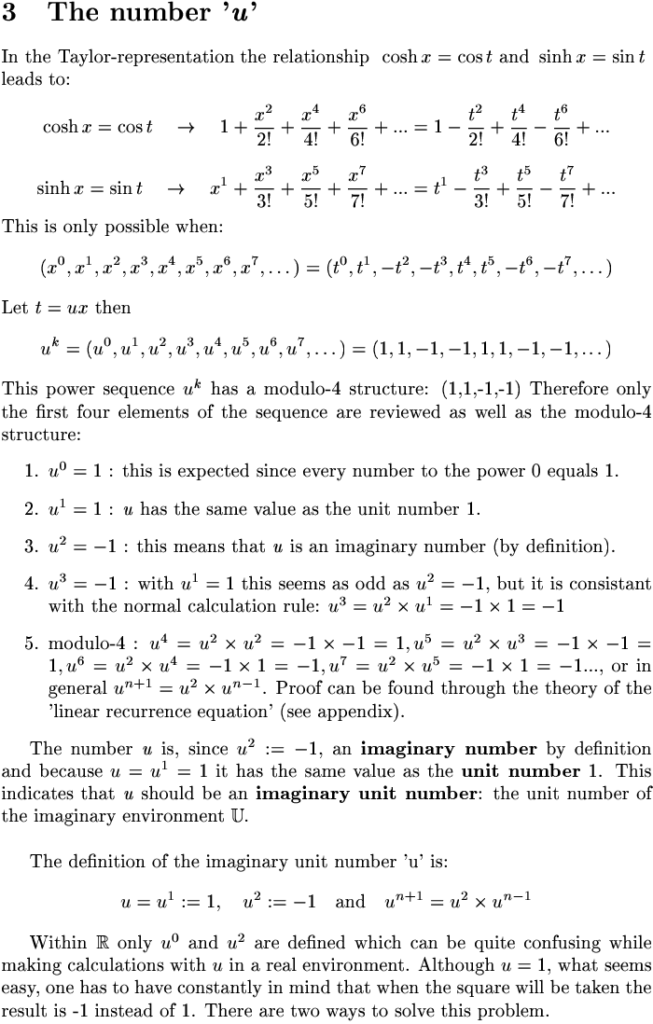The number u
Abstract
When making calculations involving the imaginary number i the complex number (z = a + bi) is used. As known, a complex number can be seen as a vector in the 2-dimensional complex plane and can be interpreted in two ways: through the angle or the coordinates using the complex unit circle. Both interpretations have to lead to the same result and using Taylor and Euler this leads to an unreal number ‘u’.
The power sequence of the number u has a modulo-4 structure: (1,1,-1,-1). The number u is, because u2 = −1 and u1 = 1, an imaginary unit number: the unit number of the imaginary environment U. Making calculations with the number u (u=1) in a real environment is not very useful because one must constantly realize that when the square is taken, this results in -1 instead of 1. Therefore u (=√−1) can best be seen as a kind of irrational number named ‘i’ whose value is unknown, knowing that when i2 (= −1) or i0 (= 1) appears the result will be a real number. The imaginary number i can then be defined as de representative of the imaginary unit number u in the real environment R. Therefore the complex environment C can be seen as an extended version of R.
- 1 The complex unit circle
- 2 Taylor and Euler
- 3 The number u



